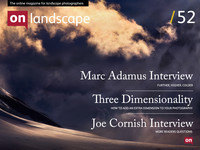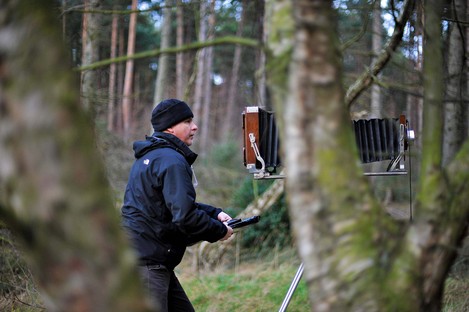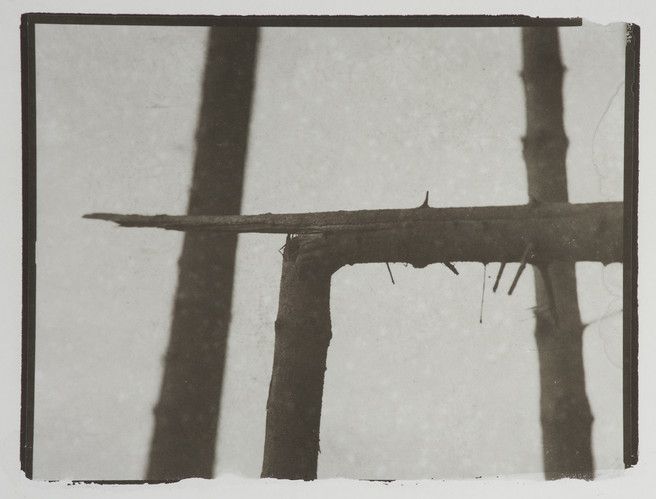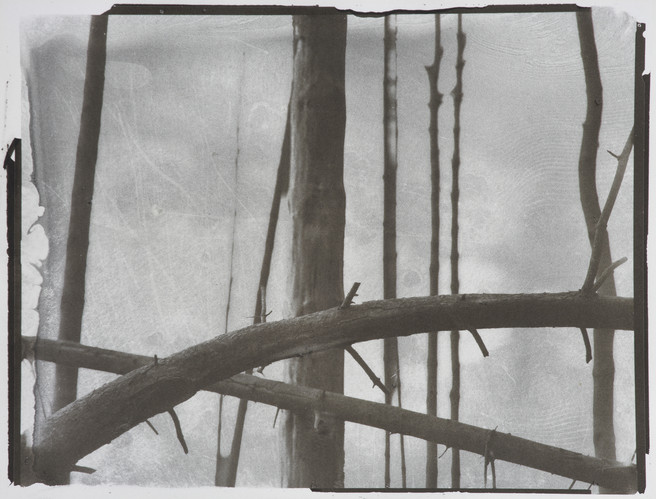David Chalmers in Conversation with Joe Cornish
David Chalmers, a product photographer who specialises in the drink industry, is also a landscape photographer and Joe Cornish recently interviewed him at the Woodend Creative Workspace. His recent work, and the major topic of the talk, is the use of carbon printing but with the extra twist of making the photographs from wood sourced from the copse that the photographs were taken in. We also asked David a few questions which are included below the video including some of his images.
We're hoping to get to meet David and perhaps get a demonstration of the processes for On Landscape at some point and perhaps some more on location video. Until then..
Your commercial work and your personal work are quite separated in terms of equipment, approach and end product. Has this always been so and what path have you taken to get here in terms of technique/approach/equipment?
That's quite a question!
My commercial work was always a means to an end in terms of making a living from something that I loved. Producing personal work that I am passionate about is why I became a photographer. The two disciplines actually complement each other really well. I enjoy spending time in the studio with total control over my environment but I equally relish shooting landscapes where I just have to adapt and respond to the lighting and subject before me.
My techniques have remained fairly constant over the past 25 years. After all, light is light and a lens is a lens: at the end of the day man is the actual medium of self-expression, not the tool that he elects to use. My inspiration and the way I see has evolved, I am still striving to express how I feel using photography.
In 1999 the leap of faith was made, I invested in a phase one P20 digital back which I attached to my Mamiya RZ. This set-up had to be used tethered to my Mac but the results really were staggering. Capture One Pro was and still is superb software which handles my raw files. I now use Canon 1DS MkII for all my studio work. I switched to 35mm DSLR simply because the quality was magnificent and the cameras are more versatile for me on location.
As for my personal work and landscape; well, nothing has changed. I shoot large format black and white film, Tri X or HP5. I use my 8x10-inch Deardorff flatbed field camera and I process each sheet of film individually by hand.
You’ve used the carbon from the woods you photographed? Do you have any more plans on a similar line such as photographing the Hartelpool to Sunderland “Coal Coast”?
Carbon to Carbon evolved as a concept based on making photographic images using part of the subject within the image, in this case charcoal dust from the trees I was photographing.
This could well be explored further in terms of utilising a totally different subject; however I don’t have any plans at present. Carbon to Carbon was a unique exercise which was demanding creatively and technically.
My next project is exploring 4x5 studies of trees, which are being contact printed onto Oriental Seagul bromide paper. I’m also working on collodion wet plate for a series of rock studies in the highlands.
The 10x8 is a bit of a beast to go on much of a wander with - do you use any other cameras for your landscape work?
I use my Deardorff for most personal projects. Even though it’s a large camera, it’s always a delight to work with.
I also use a Linhof Super Technika III, which is a brilliant little 4x5 camera that will never let you down.
These works of art are really one-offs - but artists produce series of reproductions from their one-off works. Do you plan to do this or is the unique nature part of the art?
The carbon prints were really difficult to make, so I decided to produce just one fine print from each 8x10 inch negative. I also decided to sell the negative with each print, guaranteeing that every one is unique.
Making this series of photographs was very much process-led. It was nigh on impossible to make a duplicate print, so the decision not to make editions was easy for me. Just as a painter sells and releases a canvas, I was letting the work go. This seemed to evolve naturally as part of my project.
Many thanks to David - you can see more of David's work on his blog Carbon Printing or his commercial website David Chalmers Photography.













